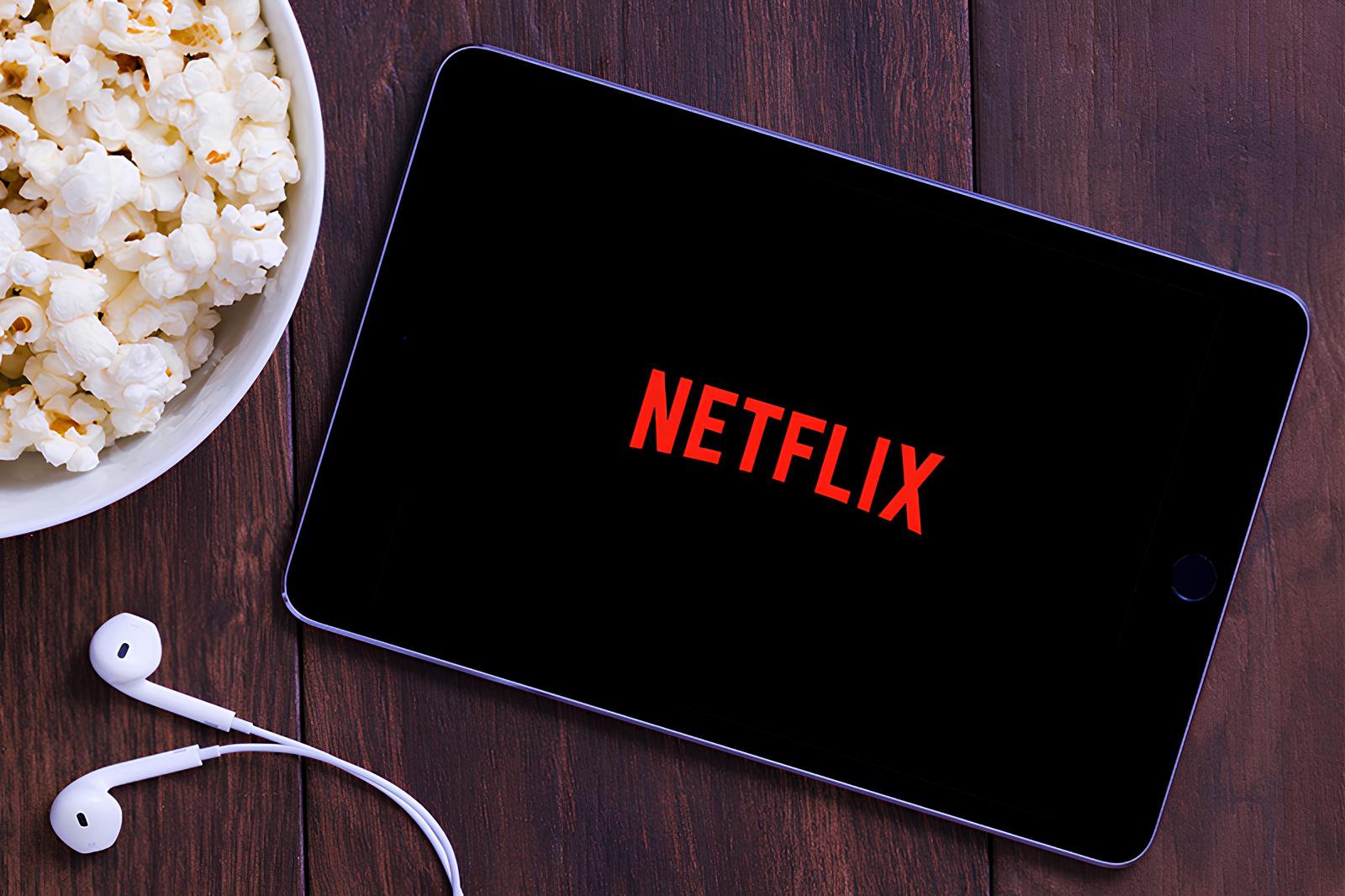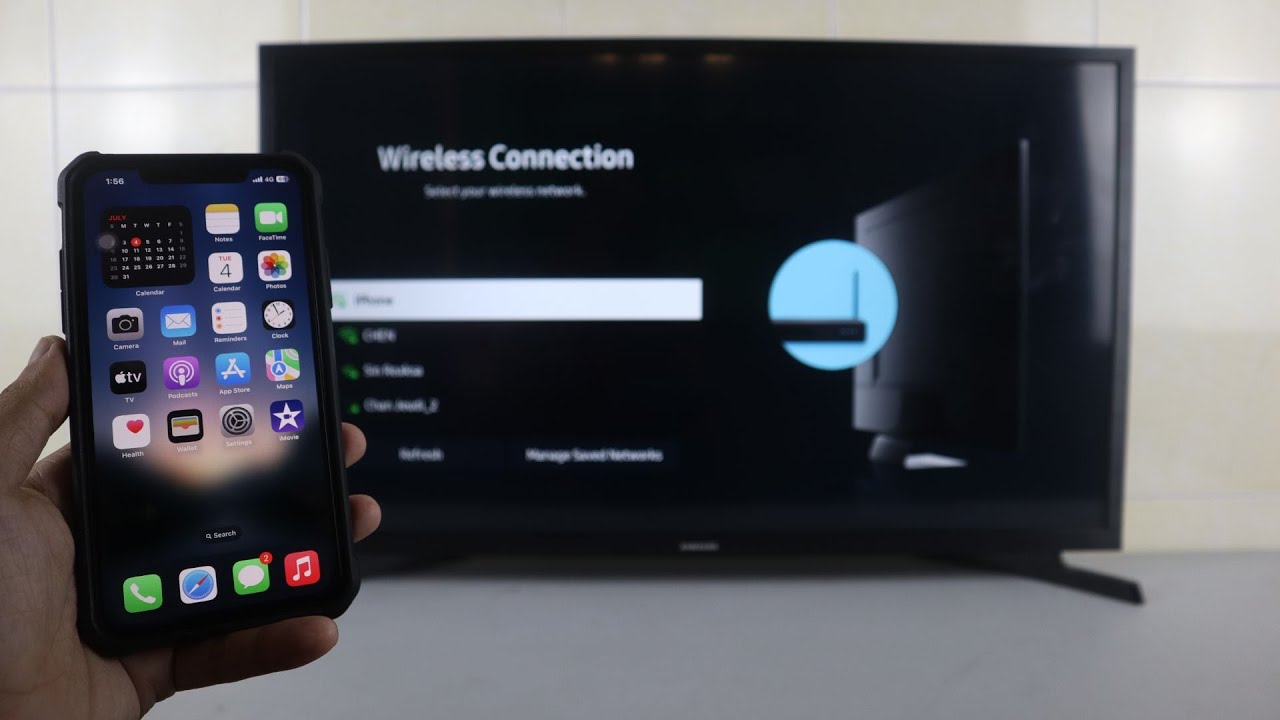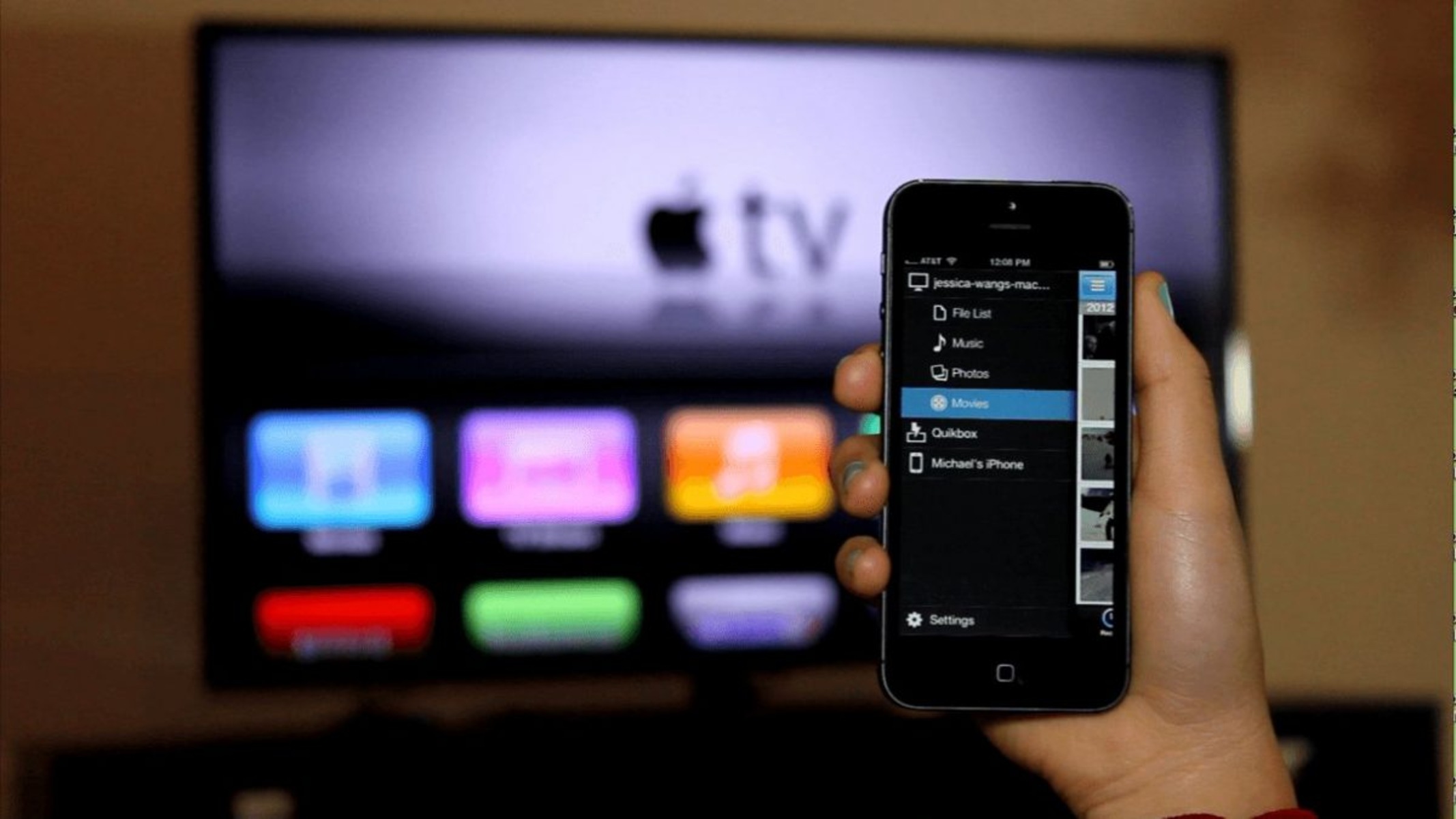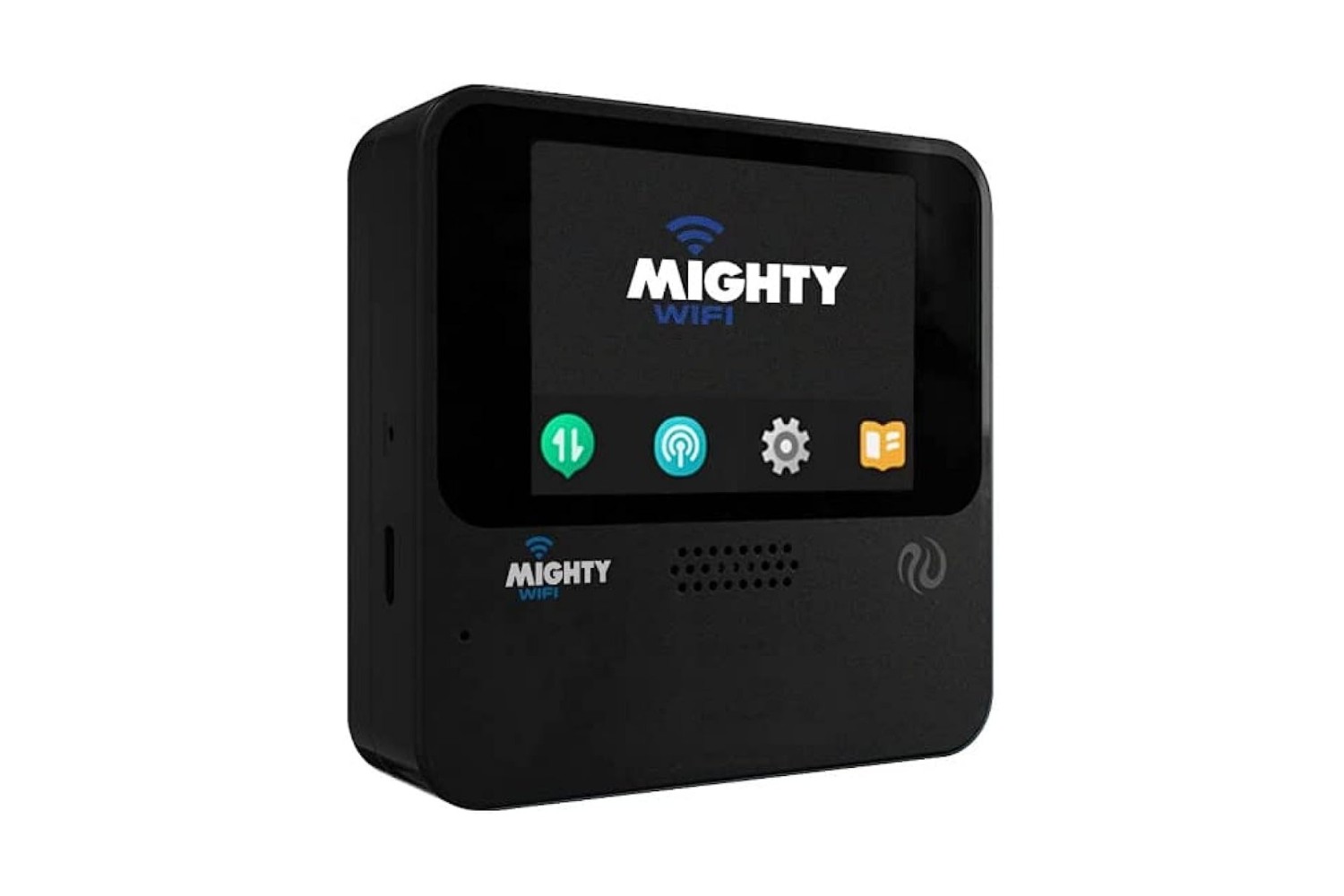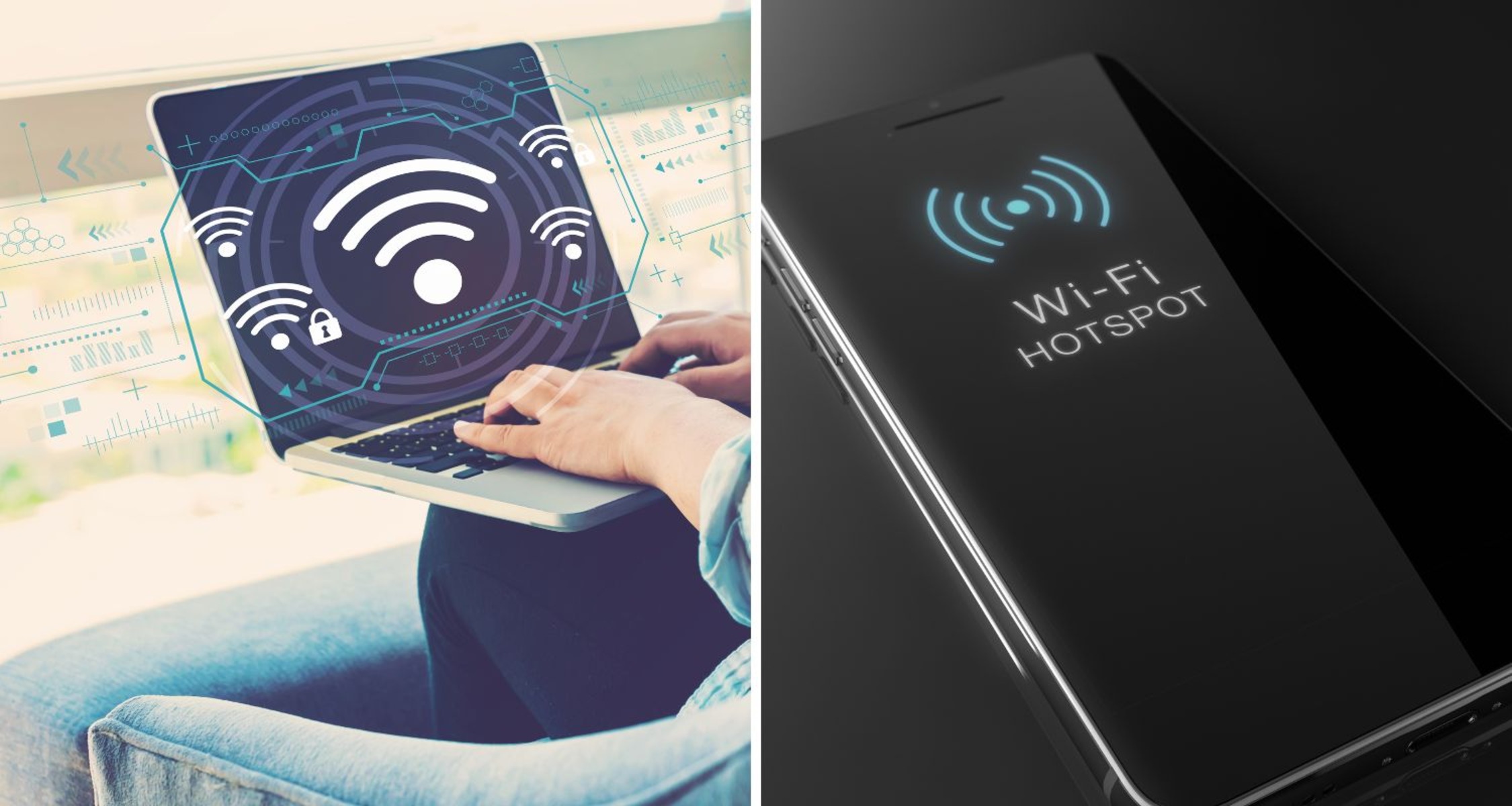Introduction
Streaming Netflix on a mobile hotspot can be a convenient way to enjoy your favorite shows and movies on the go. However, it's crucial to understand the impact of Netflix data usage on your hotspot to avoid exceeding data limits and incurring additional charges. In this article, we will delve into the intricacies of Netflix data usage on a hotspot, providing valuable guidelines and tips to help you manage and optimize your streaming experience.
As streaming services continue to dominate the entertainment landscape, more individuals are turning to platforms like Netflix to access a vast library of content. While streaming at home on a Wi-Fi network presents minimal data usage concerns, the scenario shifts when using a mobile hotspot. The limited data allocation and potential overage fees associated with hotspots necessitate a strategic approach to consuming content on platforms like Netflix.
Understanding the nuances of data consumption while streaming Netflix on a hotspot is essential for making informed decisions. By gaining insights into the factors that influence data usage, users can effectively manage their streaming habits to align with their data plans. Moreover, implementing practical tips to reduce Netflix data usage on a hotspot can lead to a more economical and enjoyable streaming experience.
In the subsequent sections, we will explore the intricacies of Netflix data usage on hotspots, providing comprehensive guidelines and actionable tips to empower users with the knowledge needed to make informed choices. Whether you're a frequent traveler, a remote worker, or someone who simply prefers the flexibility of a mobile hotspot, this article will equip you with the tools to optimize your Netflix streaming while minimizing data consumption. Let's dive into the world of Netflix data usage on hotspots and discover the strategies for efficient and cost-effective streaming.
Understanding Netflix Data Usage on Hotspot
When streaming Netflix on a mobile hotspot, it's imperative to comprehend the dynamics of data consumption. Unlike traditional cable or satellite TV, streaming services deliver content over the internet, necessitating a constant flow of data to sustain uninterrupted viewing. The data usage associated with Netflix varies based on several factors, including video quality, device type, and viewing duration.
Factors Influencing Data Usage
Video Quality:
The video quality settings directly impact the amount of data consumed while streaming Netflix. Higher resolution settings, such as High Definition (HD) and Ultra High Definition (UHD), demand more data per hour compared to Standard Definition (SD) playback. For instance, streaming in UHD can consume up to 7 GB of data per hour, whereas SD streaming typically uses approximately 1 GB per hour.
Device Type:
The device used for streaming also influences data usage. Larger screens, such as tablets or smart TVs, may prompt Netflix to stream content in higher resolutions by default, leading to increased data consumption. Additionally, the efficiency of the device's video decoding capabilities can impact the amount of data required to render high-quality playback.
Viewing Duration:
The duration of Netflix streaming directly correlates with data usage. Extended viewing sessions naturally result in higher data consumption. It's essential to consider the cumulative impact of prolonged streaming, particularly when using a limited data hotspot connection.
Data-Saving Features
Netflix offers data-saving features that allow users to control their data usage without compromising the viewing experience. These features include adjustable video quality settings and the ability to download content for offline viewing. By leveraging these options, users can tailor their streaming experience to align with their data constraints while enjoying their favorite shows and movies.
By comprehending these underlying factors and the data-saving features offered by Netflix, users can effectively manage their data usage on a hotspot while indulging in quality streaming experiences. In the subsequent sections, we will delve into practical guidelines and actionable tips for optimizing Netflix data usage on a hotspot, empowering users to make informed decisions and maximize their streaming enjoyment.
Guidelines for Managing Netflix Data Usage on Hotspot
Managing Netflix data usage on a mobile hotspot involves strategic planning and conscientious utilization of available resources. By adhering to the following guidelines, users can effectively regulate their streaming habits and optimize data consumption on their hotspots.
1. Monitor Data Usage:
Regularly monitoring data usage is pivotal for hotspot users, especially when streaming Netflix. Most mobile carriers offer tools or apps to track data consumption. By staying informed about data usage patterns, users can make informed decisions and preemptively adjust their streaming habits to avoid exceeding data limits.
2. Adjust Video Quality Settings:
Netflix allows users to customize their video quality settings based on their data constraints. By accessing the "Playback Settings" within their Netflix account, users can select their preferred video quality, ranging from Standard Definition (SD) to High Definition (HD) and Ultra High Definition (UHD). Opting for lower resolutions conserves data while still enabling enjoyable viewing experiences.
3. Leverage Download Options:
Netflix's download feature enables users to save content for offline viewing. By downloading movies and shows over Wi-Fi before switching to a hotspot, users can circumvent excessive data usage while still accessing their favorite content. This approach is particularly beneficial for users with limited hotspot data allocations.
4. Time Streaming Sessions Wisely:
Strategic timing of streaming sessions can contribute to efficient data management. Consider scheduling Netflix viewing during off-peak hours when network congestion is minimal. Additionally, being mindful of the duration of streaming sessions can help mitigate excessive data consumption.
5. Optimize Device Settings:
Adjusting device settings can influence data usage while streaming Netflix on a hotspot. For instance, enabling data-saving modes on smartphones and tablets can reduce overall data consumption without compromising the viewing experience. Similarly, ensuring that smart TVs and streaming devices are configured for optimal data efficiency can yield tangible data savings.
By adhering to these guidelines, users can navigate the intricacies of managing Netflix data usage on a hotspot with confidence and prudence. Implementing these proactive measures empowers individuals to strike a harmonious balance between indulging in compelling content and judiciously utilizing their hotspot data resources.
Tips for Reducing Netflix Data Usage on Hotspot
Efficiently reducing Netflix data usage on a hotspot involves implementing practical strategies and leveraging the available features to optimize the streaming experience while conserving data. By embracing the following tips, users can proactively manage their data consumption and enjoy uninterrupted Netflix streaming without exceeding their hotspot data limits.
1. Enable Data Saver Mode:
Netflix offers a "Data Saver" feature that adjusts video quality to consume less data while streaming. By activating this mode within the Netflix app settings, users can significantly reduce data usage without compromising the overall viewing experience. This feature intelligently optimizes streaming quality based on available bandwidth, ensuring efficient data utilization on a hotspot connection.
2. Limit Streaming to Standard Definition (SD):
Opting for Standard Definition (SD) playback instead of higher resolutions can substantially curtail data usage. Within the Netflix account settings, users can manually select SD as the default video quality. This deliberate choice enables seamless streaming while consuming considerably less data, making it ideal for hotspot usage with data conservation in mind.
3. Leverage Offline Viewing:
Maximize the benefits of Netflix's download feature by proactively downloading content over Wi-Fi for later offline viewing. By building a library of downloaded movies and shows, users can indulge in their favorite content without relying solely on hotspot connectivity. This approach not only reduces data usage but also ensures uninterrupted entertainment, particularly in situations where consistent hotspot access may be limited.
4. Monitor Data Usage Per Device:
For households or individuals utilizing multiple devices for Netflix streaming on a shared hotspot, it's essential to monitor data usage per device. By identifying data-intensive devices and optimizing their settings for efficient streaming, users can collectively minimize overall data consumption while maintaining a diverse range of viewing options.
5. Schedule Automatic Quality Adjustments:
Netflix allows users to schedule automatic adjustments to video quality based on data usage preferences. By enabling this feature, users can define their preferred data usage levels, prompting Netflix to automatically adjust video quality to align with these settings. This proactive approach ensures that data consumption remains within predefined limits, offering a seamless streaming experience while mitigating excessive data usage.
By embracing these tips, users can proactively manage and reduce Netflix data usage on a hotspot, empowering them to make informed decisions and optimize their streaming habits. These practical strategies enable individuals to strike a balance between enjoying compelling content on Netflix and conscientiously utilizing their hotspot data resources.
Conclusion
In conclusion, effectively managing Netflix data usage on a mobile hotspot is a multifaceted endeavor that demands a blend of strategic planning, informed decision-making, and proactive utilization of available features. By comprehending the factors influencing data consumption, leveraging data-saving options, and adhering to practical guidelines and tips, users can optimize their streaming experiences while conserving their hotspot data resources.
The understanding of video quality settings, device type impact, and viewing duration provides valuable insights into the nuances of Netflix data usage on a hotspot. This knowledge empowers users to make deliberate choices regarding video quality settings and device configurations, aligning their streaming habits with their data constraints.
Furthermore, the availability of data-saving features within the Netflix platform, including adjustable video quality settings and offline viewing capabilities, offers users the flexibility to tailor their streaming experiences to align with their data allocations. These features serve as invaluable tools for mitigating excessive data usage and ensuring uninterrupted access to a diverse array of content.
The guidelines for managing Netflix data usage on a hotspot emphasize the importance of proactive data monitoring, strategic video quality adjustments, and optimized device settings. By implementing these guidelines, users can navigate their streaming habits with prudence, ensuring that their hotspot data resources are utilized efficiently without compromising their viewing experiences.
Moreover, the actionable tips for reducing Netflix data usage on a hotspot, such as enabling data saver mode, prioritizing Standard Definition (SD) playback, and leveraging offline viewing, offer practical strategies for minimizing data consumption. These tips empower users to proactively regulate their data usage, fostering a harmonious balance between immersive entertainment and conscientious data management.
In essence, the comprehensive understanding of Netflix data usage on a hotspot, coupled with the implementation of practical guidelines and tips, equips users with the knowledge and tools to optimize their streaming experiences. By embracing these strategies, individuals can indulge in their favorite shows and movies on Netflix while judiciously managing their hotspot data resources, ensuring a seamless and cost-effective streaming experience.
Ultimately, the fusion of informed decision-making, proactive data management, and the utilization of data-saving features enables users to unlock the full potential of Netflix streaming on a hotspot, fostering a harmonious synergy between entertainment and data conservation.







